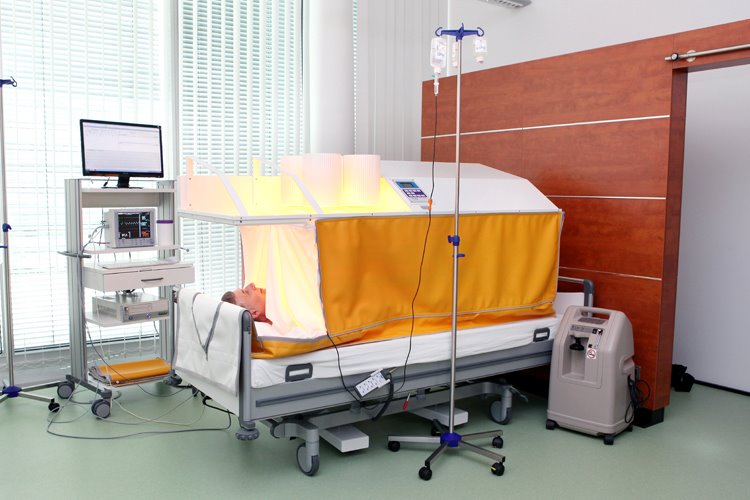This treatment approached is based on the fact that unlike normal cells, cancer cells cannot survive in high temperatures, since they lack the ability of regulating heat. Rising the body’s temperature causes a chain of events in the cancer cells, which eventually leads to the state of a “programmed cell death” (“apoptosis”). Heating the patient’s body can be achieved by circulating the blood through a heating device, local hyperthermia can be done by external or internal energy sources, regional hyperthermia by perfusion of organs or limbs, or by irrigation of body cavities.
Dr. Vasquez from IBC Hospital talks about cancer cells’ sensitivity to heat:
A whole-body hyperthermia is a process in which the entire body heats to a temperatures of about 39 to 43 °C (102 to 109 °F), or even higher temperatures, depending in the condition of the patient and the effectiveness of the therapy.

Significant improvement in clinical outcome has been demonstrated for tumors of the head and neck, breast, brain, bladder, cervix, rectum, lung, esophagus, vulva and vagina, and also for melanoma. Additional hyperthermia resulted in remarkably higher response rates, accompanied by improved local tumor control rates and increasing overall survival rates.
Dr. Alvarez from Stella Maris Clinic explains about Hyperthermia and other Tumor Cell Resistance treatments:
Information source: IBC Hospital Brochure.
For more insights about Hyperthermia Therapy, please visit:
https://www.cancer.gov/about-cancer/treatment/types/surgery/hyperthermia-fact-sheet#q1
https://www.ncbi.nlm.nih.gov/pubmed/12181239















